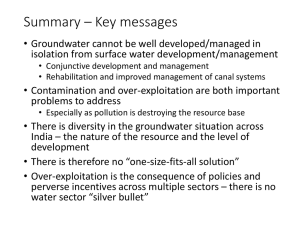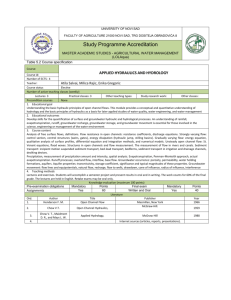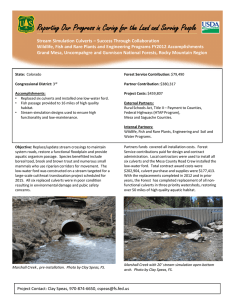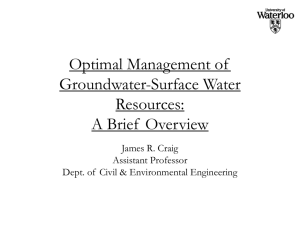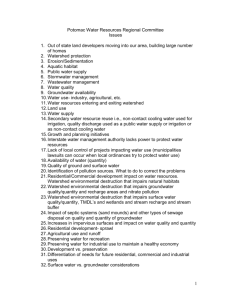gp_abstract
advertisement
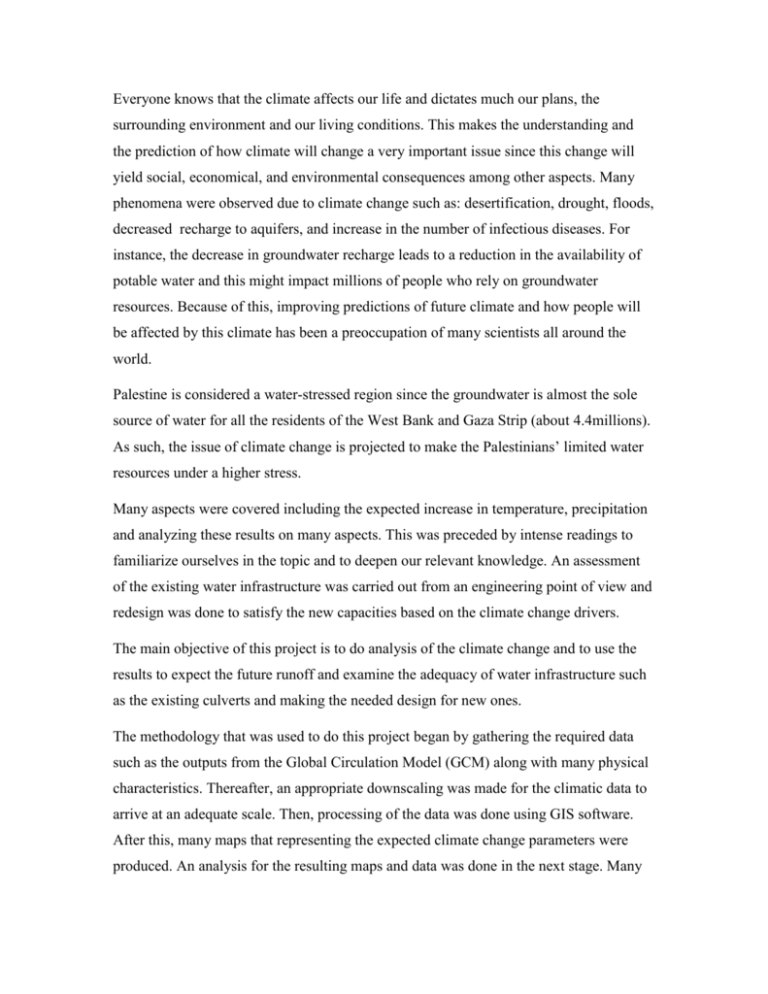
Everyone knows that the climate affects our life and dictates much our plans, the surrounding environment and our living conditions. This makes the understanding and the prediction of how climate will change a very important issue since this change will yield social, economical, and environmental consequences among other aspects. Many phenomena were observed due to climate change such as: desertification, drought, floods, decreased recharge to aquifers, and increase in the number of infectious diseases. For instance, the decrease in groundwater recharge leads to a reduction in the availability of potable water and this might impact millions of people who rely on groundwater resources. Because of this, improving predictions of future climate and how people will be affected by this climate has been a preoccupation of many scientists all around the world. Palestine is considered a water-stressed region since the groundwater is almost the sole source of water for all the residents of the West Bank and Gaza Strip (about 4.4millions). As such, the issue of climate change is projected to make the Palestinians’ limited water resources under a higher stress. Many aspects were covered including the expected increase in temperature, precipitation and analyzing these results on many aspects. This was preceded by intense readings to familiarize ourselves in the topic and to deepen our relevant knowledge. An assessment of the existing water infrastructure was carried out from an engineering point of view and redesign was done to satisfy the new capacities based on the climate change drivers. The main objective of this project is to do analysis of the climate change and to use the results to expect the future runoff and examine the adequacy of water infrastructure such as the existing culverts and making the needed design for new ones. The methodology that was used to do this project began by gathering the required data such as the outputs from the Global Circulation Model (GCM) along with many physical characteristics. Thereafter, an appropriate downscaling was made for the climatic data to arrive at an adequate scale. Then, processing of the data was done using GIS software. After this, many maps that representing the expected climate change parameters were produced. An analysis for the resulting maps and data was done in the next stage. Many other tools and techniques were used in both analysis and design such as HEC-HMS, HY-8, and Excel. The analysis of the data that was obtained from the GCM’s showed that it is expected to have a decrease in the amounts of future rainfall, also a decrease in future minimum and maximum temperature as will be shown in this report. From the analysis of the effect of CC on rain-fed agriculture that it was noticed that the areasexpected future land that will be suitable for such crops will decrease significantly. The analysis of the existing culverts for the future CC drivers, the result was that the existing design is not sufficient for future conditions. And that it is needed to add additional area to the culverts in order to work effectively.

